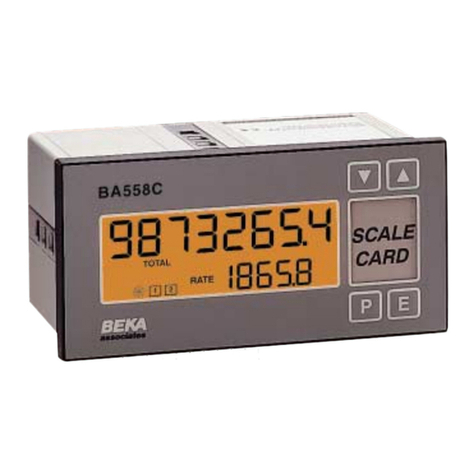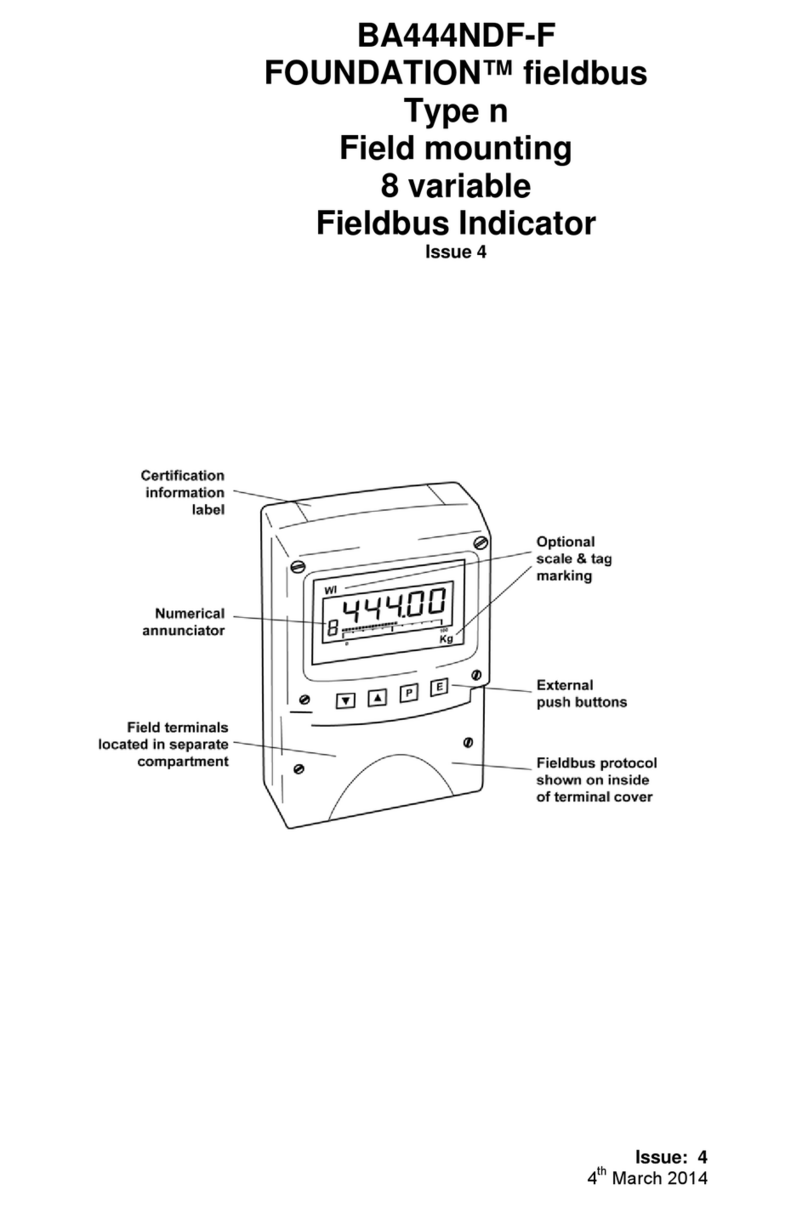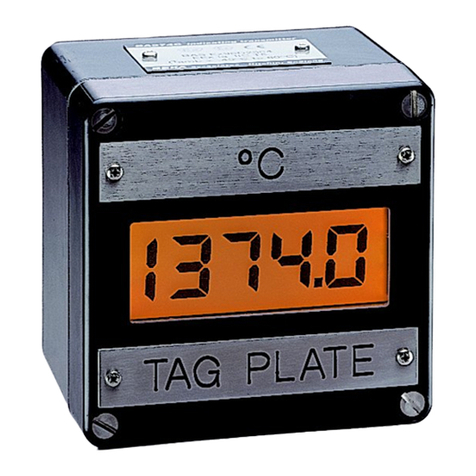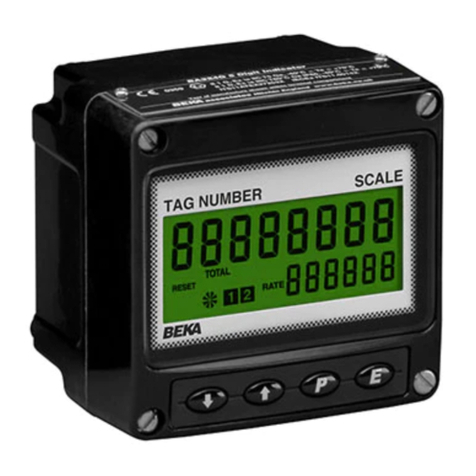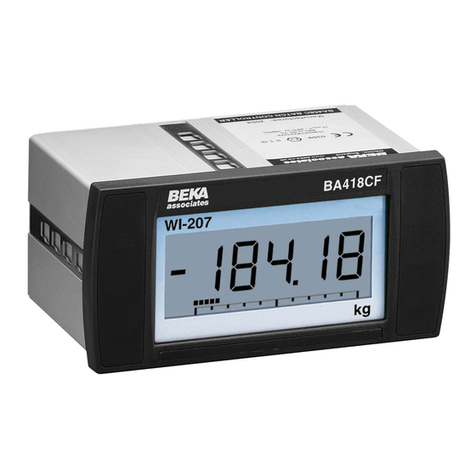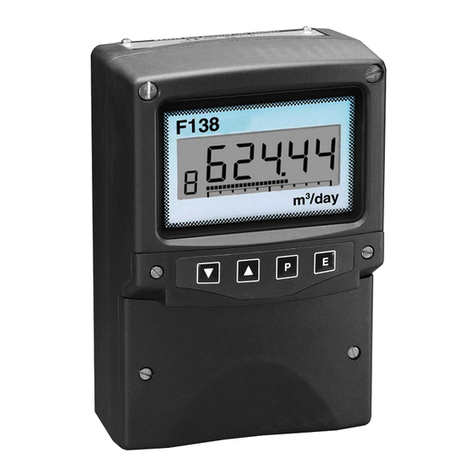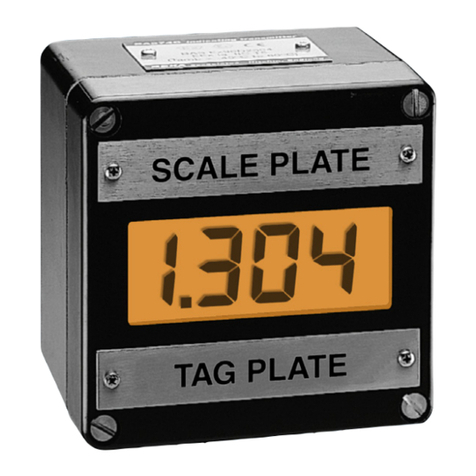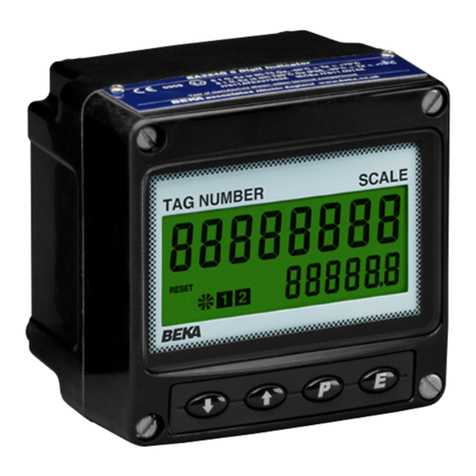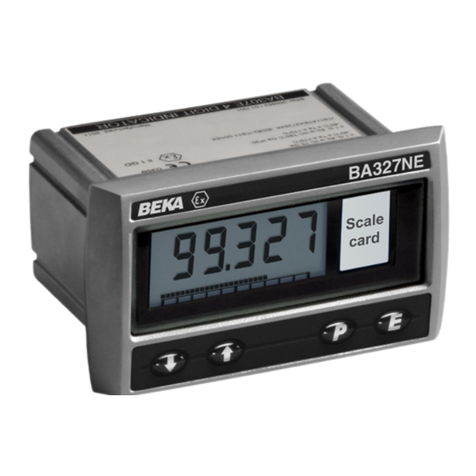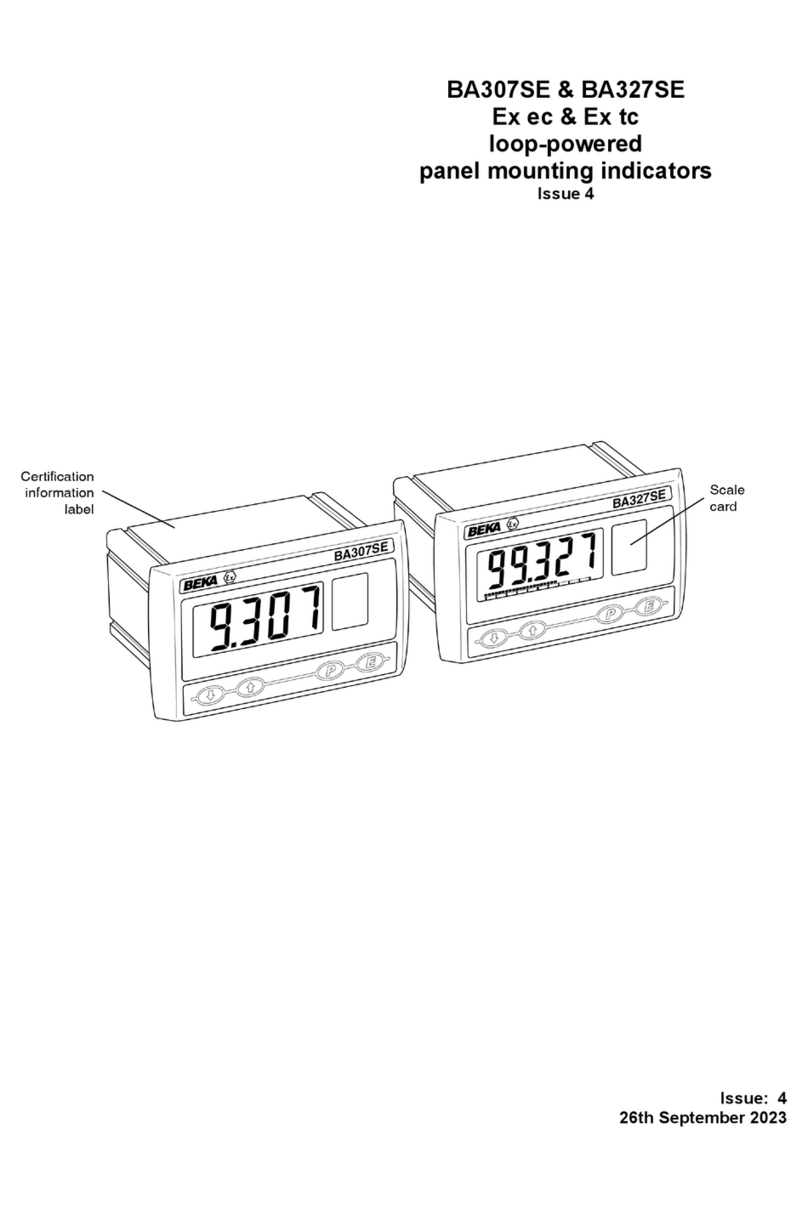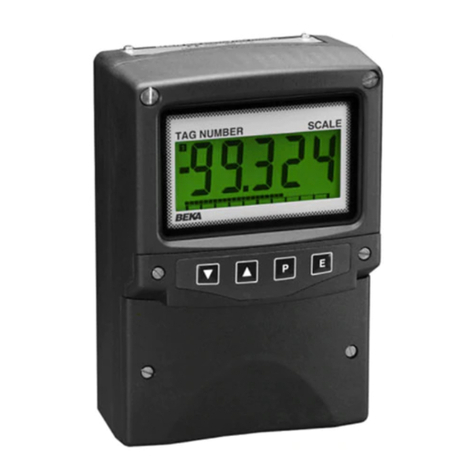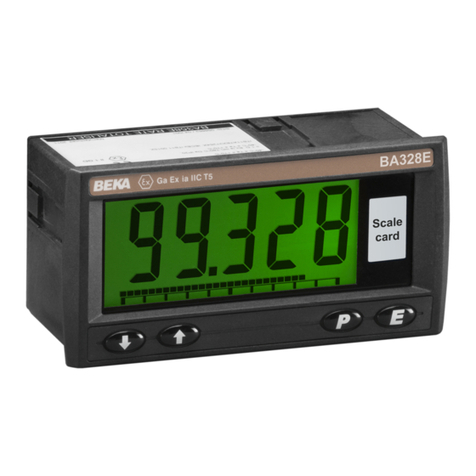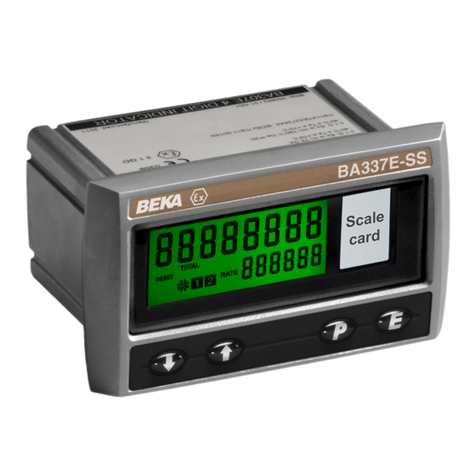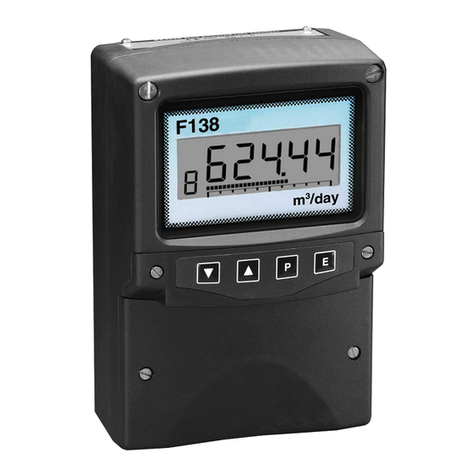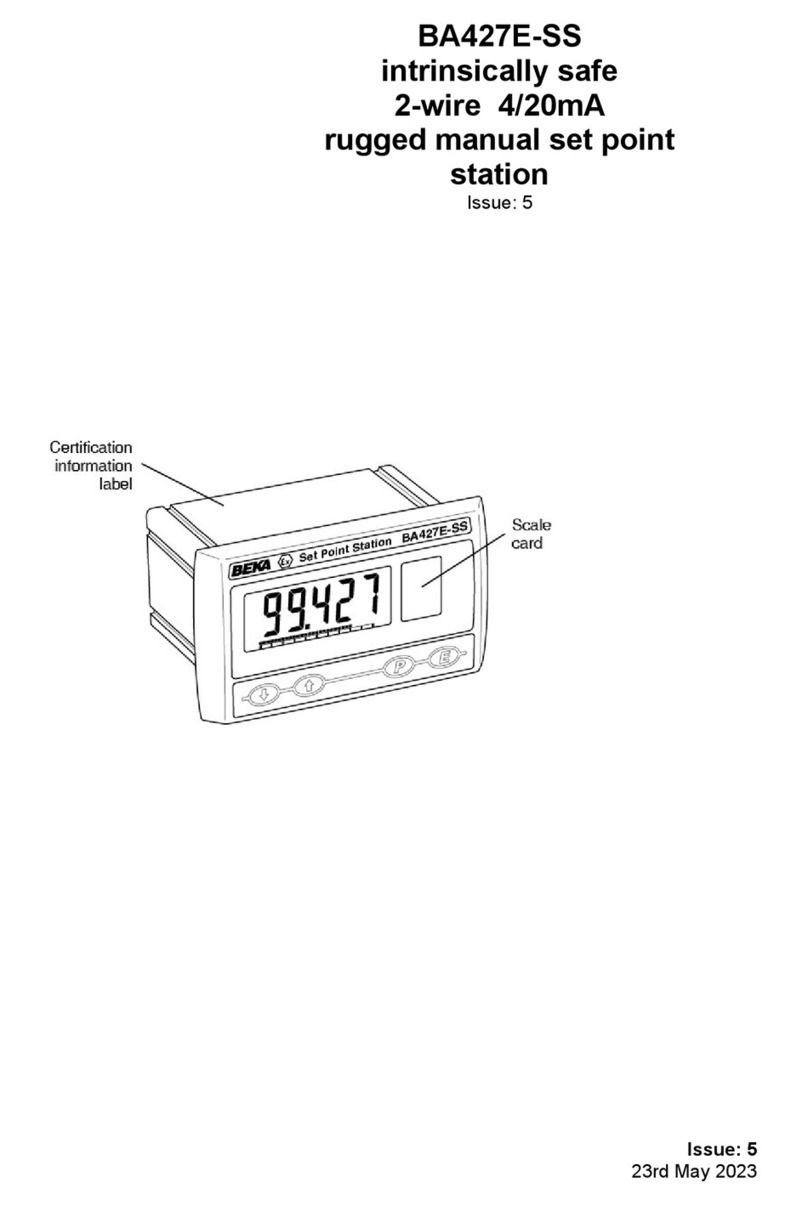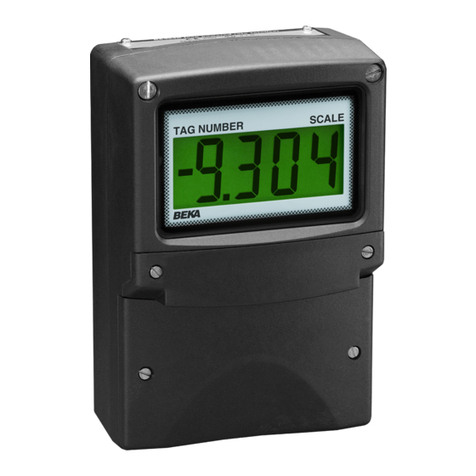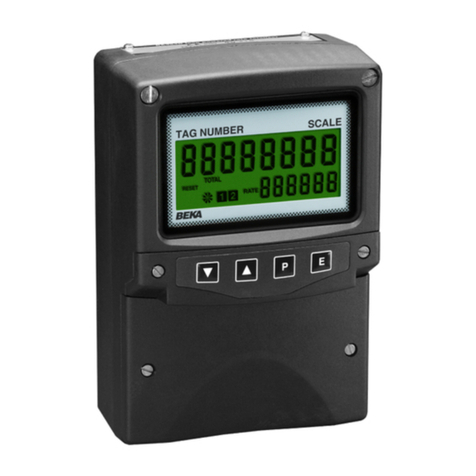
3
1. DESCRIPTION
The BA304D is an intrinsically safe loop powered
digital indicator which displays the current flowing
in a 4/20mA loop in engineering units. The
indicator introduces less than a 1.1V drop which
allows it to be installed into almost any 4/20mA
current loop. No additional power supply or battery
are required.
The BA304D is a third generation instrument
incorporating a separate terminal enclosure.
Complying with the European Explosive
Atmospheres Directive ATEX, the instrument has
been certified intrinsically safe for use in explosive
gas and combustible dust atmospheres. ATEX
dust certification is an option - See Appendix 2.
For installations in the USA and Canada, FM and
cFM intrinsic safety and nonincendive certification
are also available. See Appendix 1.
All versions have IECEx certification.
The main application of the BA304D is to display a
measured variable or control signal in a hazardous
process area. The zero and span of the display
are independently adjustable so that the indicator
may be calibrated to display any variable
represented by the 4/20mA current, e.g.
temperature, flow, pressure or level.
The BA304D has been certified intrinsically safe by
ITS Testing and Certification Ltd to the European
ATEX Directive 94/9/EC. The EC-Type
Examination Certificate specifies that under fault
conditions the voltage, current and power at the
input terminals 1 and 3 will not exceed those
specified for simple apparatus in Clause 5.4 of
EN50020:1994.
The indicator is housed in a robust IP66 glass
reinforced polyester (GRP) enclosure with an
armoured glass window.
2. OPERATION
Fig 1 shows a simplified block diagram of a
BA304D. The 4/20mA input current flows through
resistor R1 and forward biased diode D1. The
voltage developed across D1, which is relatively
constant, is multiplied by a switch mode power
supply and used to power the analogue to digital
converter and liquid crystal display. The voltage
developed across R1, which is proportional to the
4/20mA input current, provides the input signal for
the analogue to digital converter.
Fig 1 Simplified block diagram of BA304D
3. INTRINSIC SAFETY CERTIFICATION
3.1 ATEX certificate
The BA304D has been issued with an EC-Type
Examination Certificate number ITS99ATEX2001
by ITS Testing and Certification Ltd (formerly ERA
Technology Ltd) showing compliance with the
European ATEX Directive 94/9/EC for Group II,
Category 1, gas and dust atmospheres, EEx ia IIC.
The instrument bears the Community Mark and,
subject to local codes of practice, may be installed
in any of the European Economic Area (EEA)
member countries. ATEX certificates are also
acceptable for installations in Switzerland.
This manual describes installations in gas
atmospheres which conform with BS
EN60079:Part 14:2003 Electrical Installation in
Hazardous Areas. When designing systems for
installation outside the UK, the local Code of
Practice should be consulted.
For use in the presence of combustible dust,
please refer to Appendix 2 which describes
installations complying with EN 61242 -14. Dust
certification is an option, which must be specified
when the instrument is ordered.
3.2 4/20mA input
In Europe, sources of energy which do not
generate more than 1.5V; 100mA, and 25mW are,
for intrinsic safety purposes, considered to be
simple apparatus (Clause 5.4 of EN50 020:1994).

